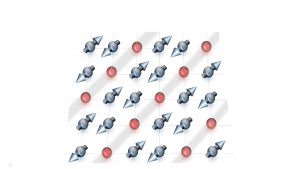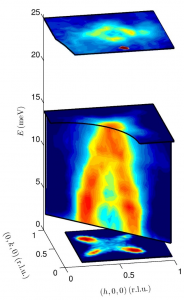Supervisor: Dr. Paul Freeman

Ideal charge-stripe order in 2 dimensional layered crystal structrue of La5/3Sr1/3CoO4, where the charge-stripes are shaded grey [3]
The magnetism of charge ordered materials will be investigated using the techniques of neutron and x-ray scattering. Understanding the magnetism of charge ordered phases is important to determine its role in effects such as high temperature cuprate superconductivity, and develop the theory of magnetism in materials with strong electron correlations.
High temperature superconductivity is believed to originate from magnetic interactions. Since the discovery of cuprate high temperature superconductivity great advances have been made in our understanding of strongly correlated electron systems and quantum magnets, at the same time as ground breaking advancements of experimental techniques have been made. Ever since the observation of charge-stripes in a specific hole doped cuprate, there has been a great debate on the roll of charge-stripes in high temperature superconductivity[1]; cause or competing phase? A key to resolving this question may come from studying model charge-stripe ordered materials such as the non-superconducting insulators La2-xSrxCoO4 and La2-xSrxNiO4+d[2-4].. Recently our neutron scattering studies of the magnetism of La5/3Sr1/3CoO4 have shown striking similarities to the magnetism of the cuprates, that can be explained with a disordered charge-stripe phase[2,3].
In this project the magnetism of charge ordered materials such as La2-xSrxCoO4 and La2-xSrxNiO4+d will be investigated. Studies into both the magnetic and charge ordered structures, along with the magnetic excitations will be undertaken. Experiments will be proposed at world leading research facilities on world leading instruments; neutron sources such as the Insitut Laue-Langevin in France, SINQ at the Paul Scherrer Institut in Switzerland, and x-ray sources such as the ESRF in France, and SLS at the Paul Scherrer Institut in Switzerland. Potentially parts of these studies will be performed in international collaboration with research groups from other universities.
References
[1] J. M. Tranquada, et. al., Nature 375, 561 (1995)..
[2] A. T. Boothroyd, P. Babkevich, D. Prabhakaran & P. G. Freeman Nature 471, 341–344 (2011).
[3] P. Babkevich, P. G. Freeman, M. Enderle, D. Prabhakaran & A. T. Boothroyd. Nature Communications 7 11632 (2017).
[4] P. G. Freeman, S. R. Giblin, M. Skoulatos, R. A. Mole & D. Prabhakaran, Sci. Rep. 9, 14468 (2019)

The hourglass shaped magnetic excitation spectrum of charge ordered La5/3Sr1/3CoO4 [2]
